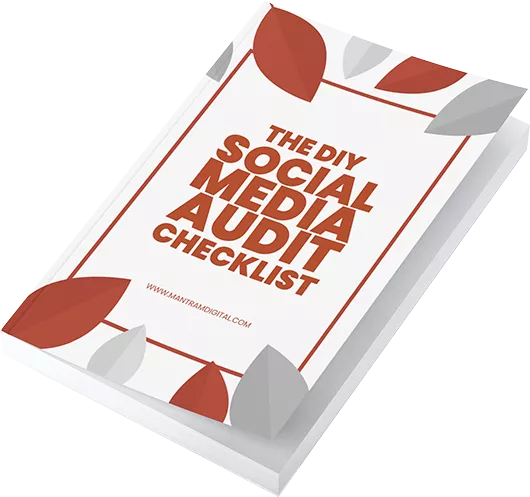English
Dutch
German
Hindi
Arabic
Spanish
Portuguese
Filipino
There are thousands of languages worldwide, but can you imagine a time when everyone spoke just one?
Just like different countries have their own languages, every industry has its own specialized vocabulary.
Understanding these key terms is like having a decoder ring that unlocks a hidden world of knowledge.
The best opportunities and insider information are often reserved for those fluent in their field’s language.
Knowing the fancy Facebook jargon and ad terms isn’t enough. You have to understand what they mean to truly crush your campaigns!
Here are 25 Key Facebook Advertising Terms You Need to Master.
1. Add To Cart – the recorded quantity of add-to-cart occurrences that are linked to your ads by the Facebook Pixel.
2. Account ID – This is the unique number linked to your Facebook advertising account.
3. Audience Network – A group of Facebook’s partners. Various mobile app and website publishers display your ads on their platforms.
4. Average CPC – it is a metric that shows the amount you pay for each click on your advertisement. It is calculated by dividing the total ad budget by the number of clicks your ad received. This metric can be used as a reference point to evaluate your ad spend.
5. Average Order Value – This refers to the average value of each order or sale on your website. This figure is calculated by dividing the total revenue by the total number of orders received. It is a critical metric to monitor as it helps you determine the right pricing and advertising strategies for your business.
6. Bid Strategies – Facebook will utilize a bid strategy to place a bid on your behalf during the ad auction. Select one of the following strategy types when you manually set the bid: lowest cost, bid cap, cost cap, greatest value, target cost, or minimum return on assets.
7. Boosted Post – To increase your brand exposure, consider boosting a Facebook page post instead of running ads. This will make the post more visible to people who haven’t liked it. But if you want more optimization options, use Ad Manager to create ads.
8. Campaign Budget Optimization – A new Facebook feature lets the platform determine ad set budgets automatically, optimizing outcomes within budget limits.
9. Click-Through Rate (CTR) –the proportion of viewers who clicked on your advertisement after seeing it. determined by splitting the total number of impressions by the total number of clicks. It can assist you in ascertaining the efficacy of an advertisement in increasing website traffic.
10. Conversion rate – the conversion rate is the percentage of clicks on ads that result in a sale.
11. Conversion rate optimization – the process of optimizing your ads to provide more conversions.
12. Cost Per Thousand Impressions (CPM) – the cost of displaying one thousand ads is known as cost per mille (CPM). Your campaign’s efficiency can be evaluated by considering the CPM.
13. Cost per action (CPA) –the average cost per interaction with your advertisement is calculated by dividing your total ad spend by the number of completed activities.
14. Cost per purchase (CPP) – The typical price of a purchase made after viewing one of your ads can be computed by dividing the total ad spend by the total number of purchases.
15. Customer Lifetime Value – a measure that forecasts the entire lifetime earnings that can be linked to a particular client. When figuring out how much you can afford to spend on customer acquisition, CLTV is essential.
16. Dynamic Product Ads – a Facebook ad that displays your products to users who previously visited your website or app. Upload your product catalog to Facebook to utilize dynamic advertisements.
17. Engagement Custom Audiences – people who have interacted with your page or ads within a specific time create user engagement custom audiences.
18. Event Responses – event replies are people who have marked themselves as interested or attending after viewing your advertisement.
19. Frequency – a customer may see your advertisement more than once on their Facebook page. The frequency measurement tells you how often an individual sees your advertisement on average.
20. Initiate Checkout – the maximum number of Initiate Checkout events tracked by Facebook Pixel that can be linked to your ads.
21. Lookalike Audience – A lookalike Audience is a type of audience you can create for your Facebook ads using an existing Custom Audience. The individuals in a Lookalike Audience share similarities with the members of your Custom Audience.
22. Middle of Funnel – the sales funnel’s midpoint offers your product or service as a solution to the client’s problem.
23. One-click upsell – a specific kind of upselling offer in which the buyer is given the option to click once to add more products to their cart.
24. One-time offer – a specific kind of upselling offer in which the buyer can add more products to their cart while they still have time.
25. Page Engagement – a Facebook advertising report that shows the actions taken by viewers on your post or business page.
Conclusion
Because Facebook advertising offers a wide range of features and targeting options, it can be a powerful tool for reaching your target audience. However, the learning curve can be steep, especially for beginners. To help you navigate the process effectively, this glossary will break down the essential terms you’ll encounter. By familiarizing yourself with these key concepts, you’ll be well on your way to creating successful Facebook ad campaigns.
Do you want to boost your brand awareness and generate qualified leads with powerful paid advertising? Contact us to learn more about our affordable Facebook ad service.
Last Updated on September 17, 2024
Subscribe And Receive Free Digital Marketing Tips To Grow Your Business
Join over 8,000+ people who receive free tips on digital marketing. Unsubscribe anytime.
At MantraM we strongly believe that every business or brand is unique and has its own blueprint. Just like we all have a unique purpose, so does every business. We specialize in Marketing, Social Media, & Facebook Ads.





